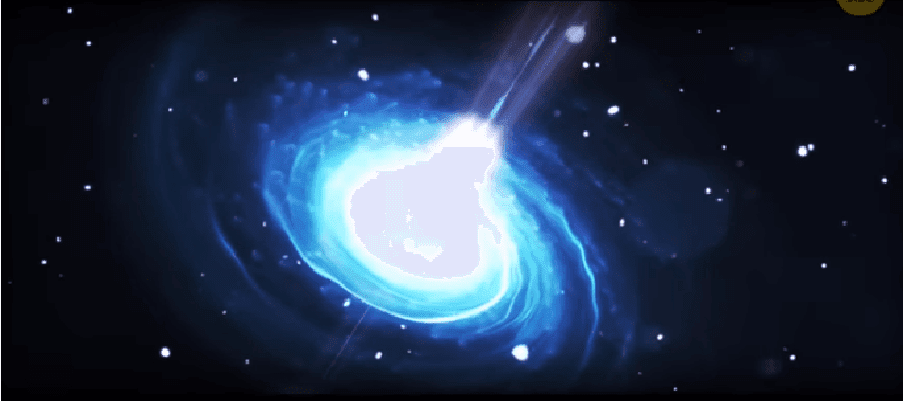There are a lot of things in Astronomy that make people curious, but some people wonder when they hear about black holes. A black hole is found in the center of every galaxy.
Black holes are among the most intriguing objects in the universe. A black hole is formed when a star collapses under its own weight and it is so dense that even light can't escape them.
The intense gravity makes it really hard to see what exactly is going on in a black hole even if one gets near the Event Horizon of a black hole, the point at which even light can't escape. But now scientists have used a clever trick to peer inside a black hole. This new method, described in a paper published in Nature Physics, could help us better understand how matter behaves under the extreme conditions found near black holes.
In the past, researchers have looked at black holes using X-rays and radio waves. But it is not easy to study and look at something that is millions of light-years away from us. The closest black hole is roughly 20 million light-years away from Earth. Even the finest telescopes won't do.
Therefore, researchers used gravitational lensing to get a closer look at the black hole. Gravitational lensing is a phenomenon that occurs when light from an object (like a star) bends around another object (like a black hole). This bending causes the light to be distorted so that it looks like multiple images of the same object are being produced.
The research team observed this effect using radio waves from six different telescopes around the world. They found that the inner disk of MB2 was vibrating like a violin string, producing sound waves with a frequency of about 100 megahertz (MHz) which is more than 10 times higher frequencies at which galaxies rotate. This ultra-high frequency may be caused by the mass of dark matter at the center of a galaxy, according to a new study published in Astrophysical Journal Letters.
Black holes are one of the most hidden secrets of this universe. Despite having a lot of information, we need to learn more about them. If light can't escape from a black hole, then how can millions and billions of stars rotating around it be safe? The answer to this question is that the quantity of matter remains the same even after the star turns into a black hole. Therefore, its gravitational force remains the same on the stars and planets in the vicinity.
After becoming a black hole, the size of the star becomes extremely smaller but the gravitational force increases tremendously within a certain range or limit. If anything crosses this limit, its return becomes impossible. This limit or boundary of the black hole is called the Event Horizon in Astronomy, a point of no return. Beyond the Event Horizon, we can't see, and the laws of physics no longer exist there.
Scientists used to claim that if a star goes near or enters the Event Horizon of any black hole, the black hole will first scatter its outer surface and then engulf it within no time. A few years back, scientists for the first time observed this perspective with the help of telescopes. This scene was observed 15 crores light-years away in two opposite galaxies Arp 99 when a star, 2 crores times bigger than our Sun, scattered as it came near a black hole. The black hole engulfed most of the star but some particles dispersed in the vicinity. Due to gravity, extreme pressure and friction were created near the Event Horizon due to which the matter emitted powerful X-rays and observable light that was seen by scientists. Some parts of matter of this star also sat off to the poles of the black hole nearly at the speed of light. This fast-moving matter is called jets and how these jets come into being has been observed for the first time.
This scene was observed 15 crores light-years away. It means no one knows the current status of these galaxies. Life on the earth was passing through its preliminary stages when this pair of galaxies collided with each other and human life was yet to begin, but the light has now reached us with this news.
The human mind and cognition can't imagine how big is this universe. The light of countless stars is still at travel to reach our earth since its inception billions of years ago and countless stars have died billions of years ago but their light is now reaching us.


%20(1).png)
.png)
.png)